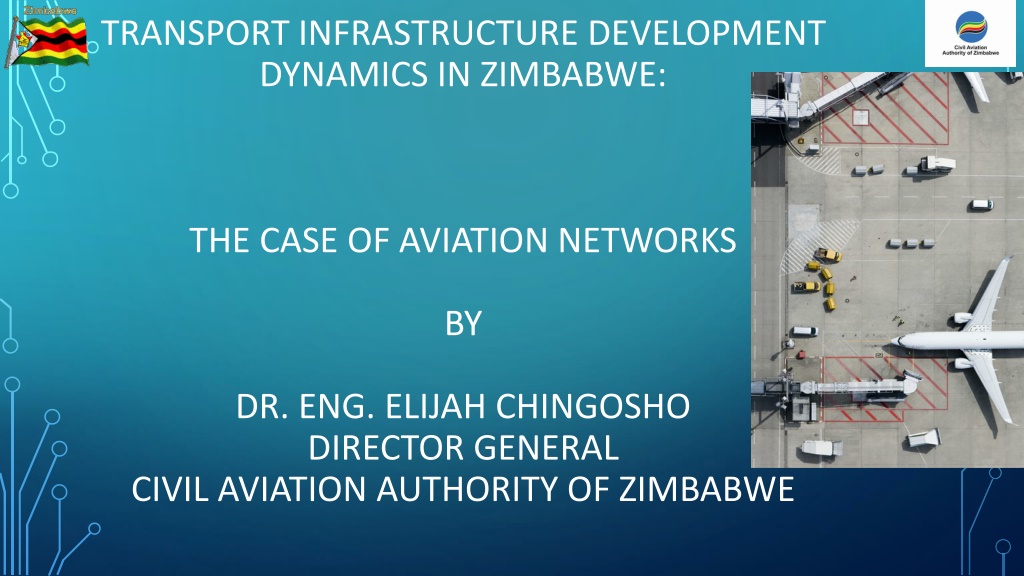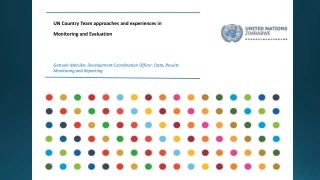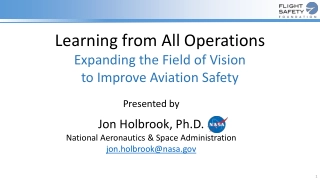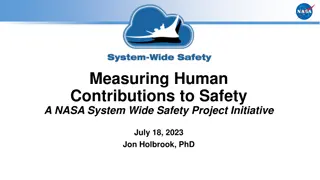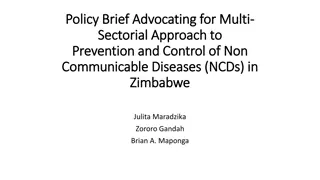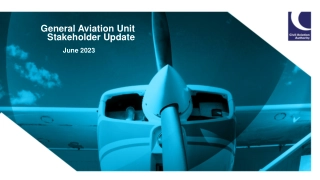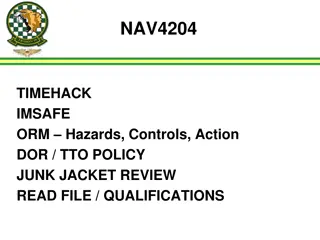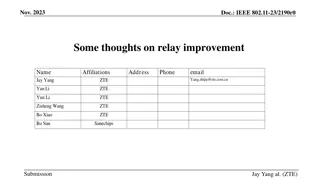Development Dynamics of Aviation Networks in Zimbabwe
Aviation plays a crucial role in Zimbabwe's economic growth, with the government focusing on infrastructure development to position the country as a regional aviation hub by 2030. Initiatives include strengthening civil aviation systems, enhancing airport infrastructure, and prioritizing safety and efficiency in aviation operations. The country's aviation sector has received positive recognition for its safety standards and progress, indicating a promising trajectory for future development.
Download Presentation
Please find below an Image/Link to download the presentation.
The content on the website is provided AS IS for your information and personal use only. It may not be sold, licensed, or shared on other websites without obtaining consent from the author. Download presentation by click this link. If you encounter any issues during the download, it is possible that the publisher has removed the file from their server.
Presentation Transcript
TRANSPORT INFRASTRUCTURE DEVELOPMENT DYNAMICS IN ZIMBABWE: THE CASE OF AVIATION NETWORKS BY DR. ENG. ELIJAH CHINGOSHO DIRECTOR GENERAL CIVIL AVIATION AUTHORITY OF ZIMBABWE
INTRODUCTION Aviation has become the lifeblood of our global economy. The thread that knits the networked aviation infrastructure is the demand for efficiency, security and safety. Zimbabwe has been on positive trajectory in implementing aviation development projects. related infrastructural
ROLE OF AVIATION IN COUNTRYS ECONOMIC DEVELOPMENT The Government of Zimbabwe recognizes the critical role of aviation in economic development and has embarked on a serious mission to ensure that the country becomes an aviation hub in the region. The Government s Vision 2030, which is aimed at the country attaining an upper middle-income status, has seen the aviation sector contributing significantly to the country s economic growth. The NDS 1 calls for more investments to continue to be directed towards improving the aviation infrastructure and regulatory services.
STRENGTHENING CIVIL AVIATION SYSTEMS CAAZ was separated from Airport operations through the Civil Aviation Amendment Act, 2018 [No. 10 of 2018]. CAAZ used to play a dual role of regulation and management of airports prior to the separation. This gave birth to the Airports Company of Zimbabwe (ACZ). Zimbabwe was recently audited by the ICAO, a specialised agency of the United Nations that, develops Standards and Recommended Practices for the global aviation industry. The outcome was a resounding endorsement of Zimbabwe s safety standards, when the country scored an Effective Implementation score of 69%, against the global average of 67% and sub-Saharan Africa s average of 58%. Under the same programme, an independent Air Accident Investigation Unit, under MOTID, was established.
AIRPORT INFRASTRUCTURE PROGRAMMES The key components of Airport Infrastructure expansion programs include Terminal Buildings, Runways, Airport Apron and Control Towers. Following these programs, improved current passenger handling capacity is : Ensures smooth passenger movements between ground transportation and airport facilities. Ensure safe runways and ground movement of aircraft. RGMIA- 6million (after expansion from 2.5million), VFA- 1.5million, BUQ- 1.5million OTHERS 550,000
SAFETY AND EFFICIENCY IN AVIATION Safety and security are CAAZ s number one priority. The Navigational Aids Systems - 3 Doppler Very High Frequency Omni- Directional Range and Distance Measuring Equipment (DVOR/DME) for R. G. Mugabe, Masvingo and J.M. Nkomo Airports. The Air Traffic Control Communication Systems project - 7 airports and sites will receive new ground to air radio communication systems for effective communication between the air traffic controllers and aircraft in the national airspace. Secondary Surveillance Radar Systems project will see the installation of systems at R. G. Mugabe and J. M. Nkomo Airports.
CAAZ will shortly embark on the production of Global Satellite Systems Procedures which allow for Performance Navigation (PBN) which will increase efficiency in flight Zimbabwe and reduce the carbon dioxide (CO2) footprint. Navigation GLOBAL NAVIGATION SATELLITE SYSTEMS Based operations in
OPEN SKIES POLICY Zimbabwe is working towards full implementation of Open Skies Policy as guided by national thrust that Zimbabwe is Open for Business and the African Union 2063 Agenda towards a Single African Air Transport Market (SAATM)
SECURITY INFRASTRUCTURE Chicago Convention (1944) - Zimbabwe has developed and implemented a robust aviation security system which is supported by an effective and efficient infrastructure at airports. The security infrastructure is backed by a sound legislative framework and highly trained, qualified and competent aviation security personnel and other national security agencies. Zimbabwe - ensures that architectural and infrastructure-related requirements are integrated into the design and construction of new facilities and alterations to existing facilities at airports. As a result, Zimbabwe attained a score of 72% during the last ICAO Aviation Security Audit. This places Zimbabwe aviation security systems at competitive levels to attract and handle such big airlines as Emirates, Qatar Airways and Euro Wings Discover.
SECURITY INFRASTRUCTURE CONT. Security Screening Systems Zimbabwe is a critical player to global security and has invested in measures to prevent and detect acts of unlawful interference. The screening of passengers, air cargo, cabin and hold baggage is conducted through infrastructure such as x- ray machines, metal and explosive detection systems. Airport Surveillance Systems The airport environment is the nerve centre for the air transport system hence the deployment of electronic surveillance infrastructure to monitor the movement of people and ensure detection of possible illicit activities. Such systems include Closed Circuit Television (CCTV), intruder alarms and electronic access control systems.
ROLE OF ICT INFRASTRUCTURE IN AVIATION COVID-19 was an eye-opener on the increased need for ICT systems Digital transformation is happening across the aviation industry. From cybersecurity to data management to information systems and automated services, airports are modernizing infrastructure to improve customer experience, operations, and staff efficiency.
ROLE OF ICT INFRASTRUCTURE IN AVIATION Flight Planning -filing and approving flight plans. Air Traffic Control Air Traffic accurately direct and handle all landing, take-offs, and ground traffic. Air traffic controllers use the interconnected aviation infrastructure to monitor the aircraft and give instructions to the pilot, handing over to the next airspace region. Controllers (ATC) able to Travel Documents Using ICTs, travel documents, like passports, are designed to be machine readable.
ADVANCE PASSENGER INFORMATION (API) PASSENGER NAME RECORD (PNR) For security reasons, it is a requirement by ICAO that airlines provide details about their passengers before they travel. Zimbabwe is establishing an Advance Passenger Information (API) and Passenger Name Record (PNR) to enhance passenger facilitation and security to combat terrorism and smuggling as well as achieving compliance with ICAO Standards. Benefits of API/PNR includes: Enhanced security in fighting terrorism and smuggling Enhanced inter- agency cooperation Improved passenger facilitation (no delays) Efficiency to airlines- reduced inadmissibles A boost to Zimbabwe s membership to ICAO Council
AVIATION AND THE ENVIRONMENT Aviation emits harmful substances such as CO2, that negatively affects the environment. Zimbabwe already is a world leader in the production of sustainable fuels namely ethanol and biodiesel. At Green Fuel, the country produces ethanol from sugarcane. The country already has the infrastructure and expertise for biodiesel production at Finealt Engineering in Mt Hampden and a plant in Mutoko. There is a unique opportunity for the country to leverage on these capabilities to be among the world leaders in the production of sustainable aviation fuels. Such fuels promise to provide the largest mitigation impact on climate change.
CONCLUSION Infrastructure projects in the aviation industry in the country have exceeded what has happened in previous decades. This has further enhanced the standards of safety, security, efficiency and operations in the country. Huge investments have been witnessed in airports, communication, navigation and surveillance and air traffic management systems as well as ICT and the area of environmental protection.
